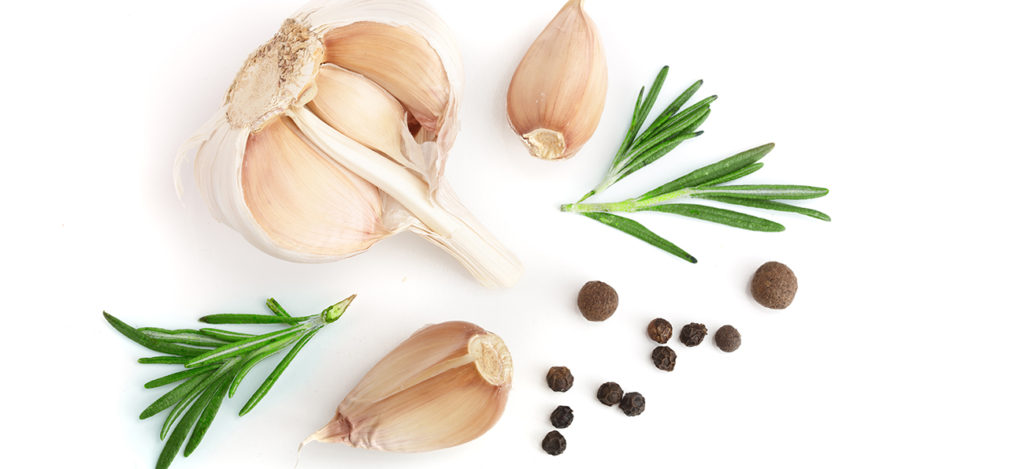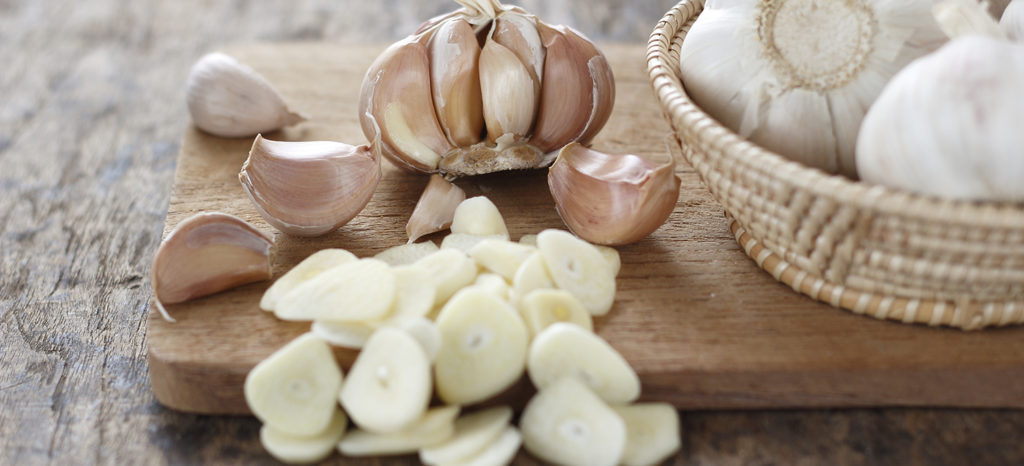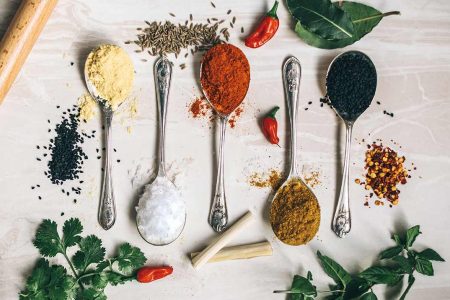If you love the taste of garlic, you probably don’t need much incentive to use it in your cooking. For many, garlic is a staple ingredient when tossing together a stir-fry or preparing pasta sauce, soups, and stews. Add a dash of crushed garlic to your salad dressing, or for an extra treat, try baking garlic cloves until creamy and spread on your choice of bread. Culinary possibilities aside, garlic enjoys a renowned pedigree for its health benefits. This article offers many of the medical reasons to incorporate garlic in your cooking and daily diet. Peel, crush, and enjoy!
Garlic
One of the oldest cultivated plants in the world, garlic is native to central Asia and has been used as a food and medicine for thousands of years. […]

Garlic is a member of the allium family, which also includes chives, leeks, and onions. A variety of sulfur-containing compounds gives garlic its pungent odor and is responsible for many of garlic’s health benefits. In addition, garlic contains an abundant array of nutrients, such as calcium, copper, manganese, phosphorus, selenium, tryptophan and vitamins B1, B6 and C.
In terms of health benefits, garlic is probably best known for preventing cardiovascular disease by decreasing cholesterol and triglyceride levels and protecting blood cells and blood vessels against inflammation and oxidative stress. Garlic also lowers blood pressure and reduces the risk of blood clots. In addition, garlic has antibacterial and anti-viral properties. And last but not least, there’s evidence that garlic helps prevent cancer and may be useful in the treatment of cancer.
To obtain the most nutrients and health benefits from garlic, purchase fresh garlic that feels firm to the touch. While some stores sell packages of peeled garlic cloves, garlic is most often sold in bulbs that are formed by several small cloves. The bulb and cloves are covered with a very thin, paperlike skin that is white, off-white, or pinkish in color. At home, store garlic bulbs in a cool, dark place.

Garlic is available in a number of forms and may also be sold as a powder or as granules. In recent years, black garlic has gained increasing popularity and is available as a packaged product in some grocery stores or online. Black garlic is fermented, which transforms both the texture and taste, making it softer and sweeter. Many people find it far more palatable than regular garlic.
Reprinted from Superfoods: Nature’s Top Ten by Myrna Chandler Goldstein, MA and Mark Allan Goldstein, MD (Summertown, Tennessee: Books Alive, 2014): p. 18. www.bookpubco.com







